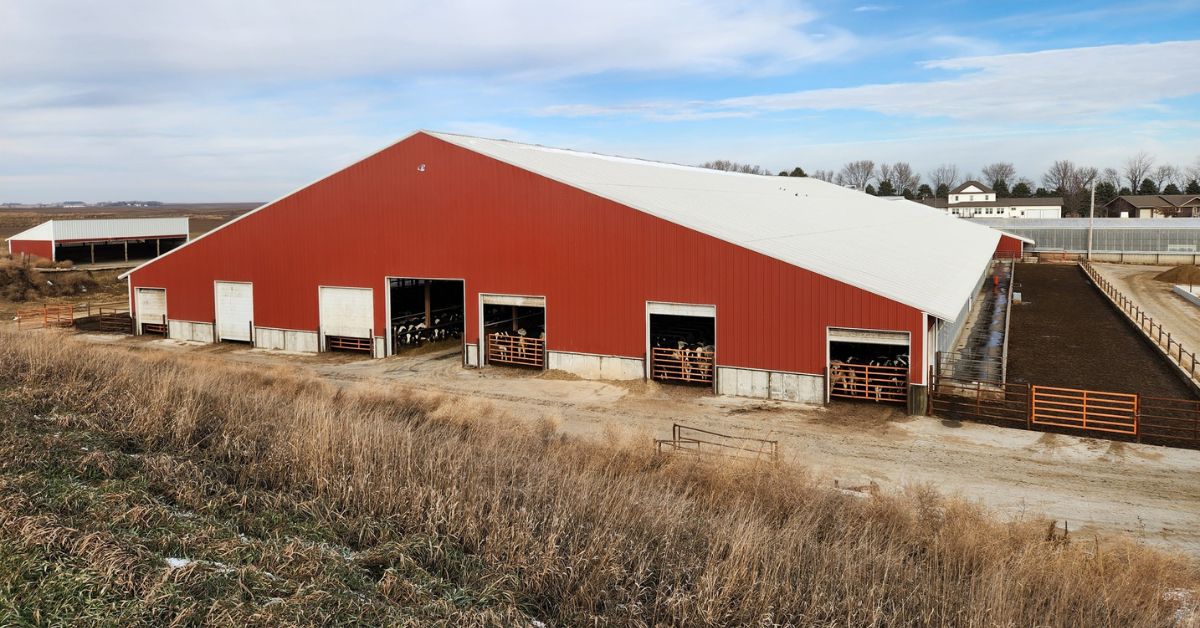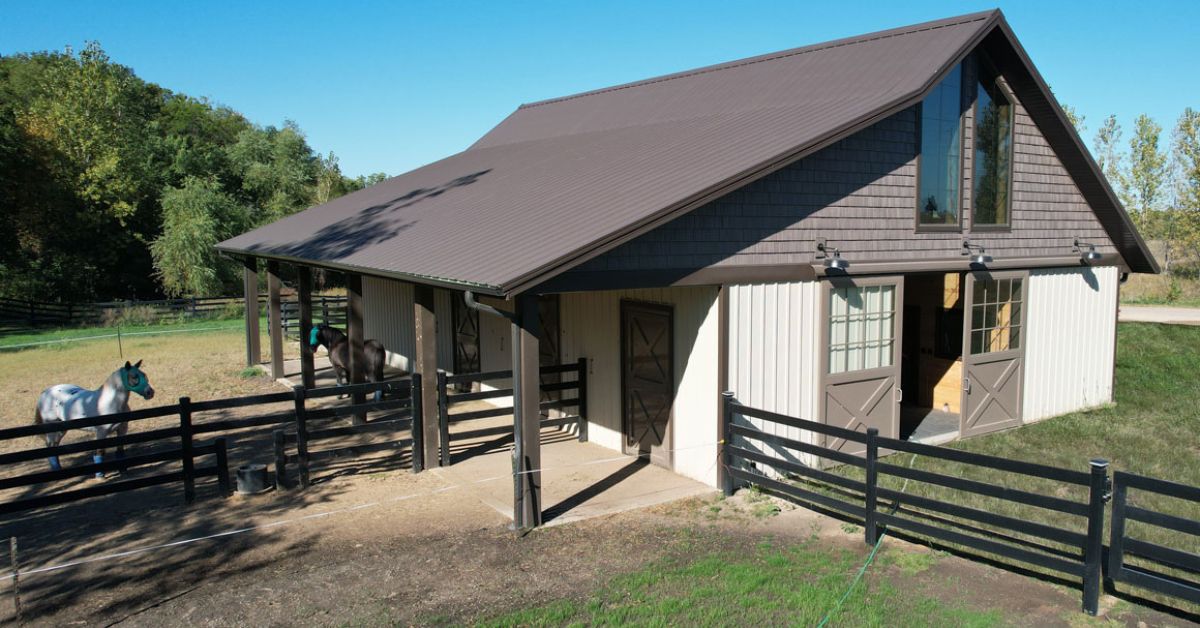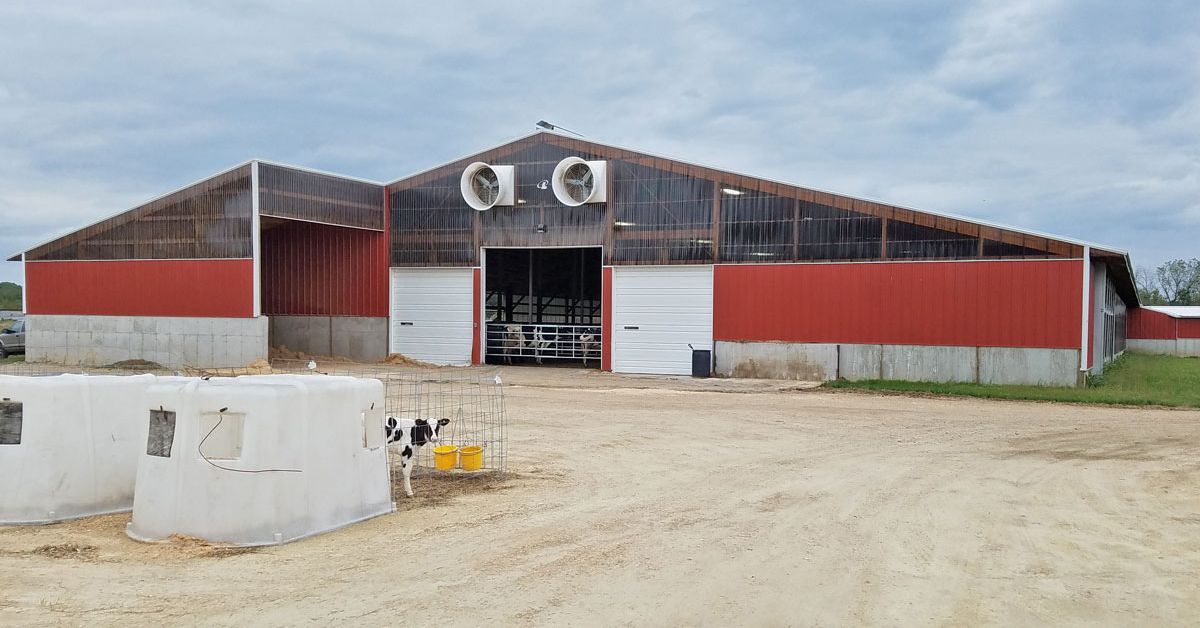What Livestock Owners Should Look for in a Barn Layout

A well-designed barn layout can make the difference between thriving livestock and costly operational headaches. The right barn design directly impacts animal health, productivity, and your bottom line, whether you’re housing cattle, sheep, goats, or pigs.
This guide covers what livestock owners should look for in a barn layout. From ventilation systems that prevent disease to smart storage solutions that streamline operations, these considerations will help you create a facility that serves your animals and your business goals.
Which Livestock Need Barns and Why
Different types of livestock require shelter for various reasons, and understanding these needs shapes your barn design decisions. Consider the following points:
- Dairy and beef cattle benefit from barns that protect them from extreme weather while maintaining good airflow.
- Sheep and goats need adequate space to prevent overcrowding, which can lead to parasites and disease transmission.
- Pigs need climate-controlled environments since they cannot regulate body temperature through sweating.
- Horses require individual stalls or run-in sheds that protect them from foul weather while allowing for natural movement and social interaction.
Each species has unique spatial, environmental, and safety requirements that your barn’s design must incorporate from the ground up.
Ventilation
Proper airflow prevents respiratory diseases, reduces humidity, and eliminates harmful gases, such as ammonia, that build up from animal waste. Poor ventilation creates breeding grounds for bacteria and viruses that can devastate your herd.
Your barn should have intake and exhaust points positioned to create cross-ventilation without creating drafts directly on animals. A good rule of thumb is to provide at least four air changes per hour in most livestock facilities.
Natural Lighting
Optimizing sunlight in your barn’s design reduces electricity costs, improves animal welfare, and makes daily tasks easier and safer. Natural light also helps regulate breeding cycles in many species and can boost immune system function.
Position the windows to maximize daylight penetration while minimizing direct glare on animals. South-facing windows capture the most light, but east and west-facing windows extend your barn’s useful daylight hours.
Flooring
The right flooring material protects animal health, ensures safety, and simplifies cleaning routines. Poor flooring choices lead to lameness, injuries, and increased maintenance costs.
From concrete and rubber to dirt and slatted floors, each option has its benefits and drawbacks. Consider your barn’s drainage, ease of cleaning, comfort for animals, and long-term durability when selecting flooring materials.
.jpg)
Space Allocation
Overcrowding leads to stress, aggression, disease transmission, and reduced productivity. Each species requires specific minimum space requirements that vary based on age, size, and production stage.
Whether it's cattle, sheep, goats, or pigs, knowing how the animals will behave is essential to keeping them happy and healthy. Plan for expansion and seasonal variations in your herd size. Include separate areas for different age groups, pregnant animals, and those requiring medical attention.
Feed and Water Access
Efficient feed and water systems reduce labor costs while ensuring all animals receive adequate nutrition. Poor access leads to competition, stress, and uneven growth rates.
Position feed and water sources to encourage natural traffic flow and prevent dominant animals from blocking access. Automatic waterers and feed delivery systems can significantly reduce daily labor requirements.
Waste Management
Effective manure management protects animal health, reduces odors, and can provide valuable fertilizer for crops. Poor waste systems create biosecurity risks and environmental problems. However, proper composting eliminates many pathogens and reduces nutrient runoff risks.
Consider composting systems that reduce volume and create a more stable product. Design collection and removal systems that minimize labor while maintaining sanitary conditions, such as scrapers, flush systems, and easy access when cleaning equipment.
Biosecurity Measures
Preventing disease introduction and spread protects your investment and ensures consistent productivity. Effective biosecurity starts with smart facility design. Include dedicated areas for quarantining new animals away from your main herd.
Separate entrances for different areas help control movement and reduce disease transmission. Consider the placement of feed storage, veterinary treatment areas, and visitor access points to minimize biosecurity risks while maintaining operational efficiency.
Safety Features
Protecting your animals and crew requires handling facilities, traffic patterns, and emergency systems thoughtfully. Opt for systems that use natural livestock behavior rather than fight against it. Curved alleys, solid panels, and non-slip surfaces reduce stress and injury risks.
Include emergency exits and evacuation procedures for animals and humans. Fire suppression systems and proper electrical installation are critical safety investments. Install first aid stations, communication systems, and quick access for emergency vehicles when designing your facility layout.
Storage Solutions
Adequate on-site storage reduces feed costs, protects equipment, and improves operational efficiency. Poor storage leads to waste, contamination, and increased labor. Feed storage should protect against moisture, pests, and contamination while allowing efficient loading and unloading.
Calculate storage needs based on delivery schedules and consumption rates. Bedding storage requires dry, accessible space that accommodates your chosen bedding material and usage patterns. Equipment storage protects valuable machinery while keeping it accessible for daily use. Include space for maintenance and repairs.
Expansion Possibilities
Planning for growth prevents costly redesigns and allows your facility to evolve with your operation. Smart initial design accommodates future expansion without disrupting existing systems. Consider modular building systems that allow you to add sections as your herd grows.
Plan site layout to accommodate additional buildings without creating operational inefficiencies or traffic problems. Ensure your barn’s water, power, and waste management utilities can handle increased capacity. Design ventilation, feed delivery, and waste management with excess capacity to handle moderate expansion without complete replacement.

The Benefits of Purchasing Prefabricated Buildings
Prefabricated barn systems offer several advantages over traditional construction methods, especially for livestock operations with specific requirements. Consider the following benefits:
- Cost predictability allows you to budget accurately without worrying about construction delays or order changes that often plague custom builds.
- Greater construction speed gets your facility operational faster, reducing the time your livestock spend in temporary or inadequate housing.
- Engineered design ensures compliance with building codes and provides tested solutions for ventilation, structural loads, and other critical systems.
- Customization options allow you to adapt standard designs to your specific livestock needs while maintaining the benefits of mass production.
- Quality control in factory settings often produces more consistent results than field construction, subject to weather delays and varying skill levels.
Many prefab manufacturers specialize in agricultural buildings and understand the unique requirements of livestock operations, offering specialized ventilation systems, animal-friendly materials, efficient layouts, and other features.
Building Success Through Smart Design
The various elements outlined above work together to create facilities that support animal welfare and operational efficiency. If you’re still wondering what livestock owners should look for in a barn layout, these tips will help you identify areas where improvements could boost productivity or reduce costs. Prioritizing the right decisions will pay dividends in animal performance and operational efficiency, whether you’re planning a new barn or upgrading existing structures.
Your barn layout represents a long-term investment in your operation’s success. Lester Building Systems offers the latest prefabricated livestock pole barn designs at prices you can afford. Partner with us to build a barn that will serve you and your animals well for decades to come.
